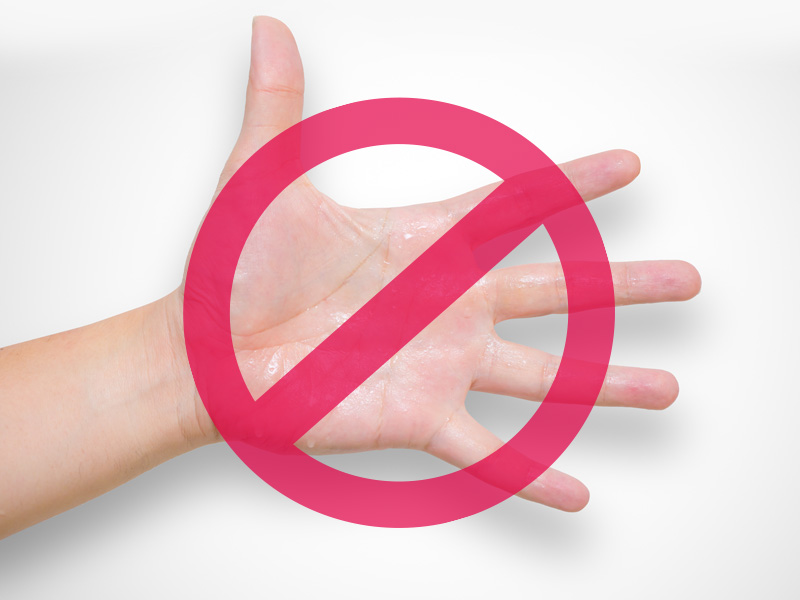Dermatology Tips and Treatments for Hyperhydrosis of Hands: Cutting-edge Solutions
Unveiling the Complexities of Excessive Sweating: A Comprehensive Overview to Medical Diagnosis and Monitoring
Extreme sweating, clinically recognized as hyperhidrosis, is a problem that impacts a substantial variety of individuals and can have a profound effect on their top quality of life. While sweating is a natural bodily function, its overactivity in hyperhidrosis provides an one-of-a-kind set of challenges that commonly exceed simple pain. Understanding the underlying reasons, recognizing the signs and symptoms, and navigating the diagnostic process for hyperhidrosis can be detailed jobs. In this thorough overview, we will explore the complexities of hyperhidrosis, from its diagnosis to the selection of therapy choices available, shedding light on efficient monitoring strategies for those coming to grips with this condition.

Recognizing Hyperhidrosis Causes
Hyperhidrosis triggers can be attributed to different aspects such as genetics, hormonal discrepancies, and particular medical problems. Genes play a considerable function in primary focal hyperhidrosis, where people inherit the condition from their family members. By recognizing the details elements adding to excessive sweating, medical care suppliers can tailor treatment strategies to deal with the underlying cause, offering alleviation and boosting the quality of life for individuals impacted by hyperhidrosis.
Acknowledging Hyperhidrosis Symptoms

Furthermore, hyperhidrosis signs and symptoms might show up in psychological and social distress, as people may feel ashamed or distressed concerning their sweating, leading to avoidance of social circumstances (Exessive Sweating). Furthermore, duplicated episodes of extreme sweating can cause skin maceration, fungal infections, and an overall reduction in self-worth
Diagnostic Refine for Hyperhidrosis
Initiating the analysis procedure for too much sweating entails extensive evaluation of the person's medical background and health examination. Making inquiries concerning the onset, period, and activates of sweating episodes is critical to differentiate between main focal hyperhidrosis and second generalized hyperhidrosis. Medical background needs to also consist of inquiries regarding drugs, clinical problems, and family members history of hyperhidrosis.
During the physical evaluation, specific interest is paid to the locations impacted by sweating. The healthcare supplier may examine the degree of sweating, check for signs of underlying problems, and examine the influence of sweating on the person's lifestyle. In addition, certain tests like the gravimetric examination, starch-iodine examination, or skin conductance measurements might be carried out to evaluate the quantity of sweat created.
Moreover, in instances where secondary hyperhidrosis is believed, extra examinations such as blood tests, pee examinations, and imaging research studies might be suggested to identify the underlying root cause of too much sweating. The analysis process intends to accurately establish the type and root cause of hyperhidrosis to lead Treatment for hyperhydrosis of hands and feet suitable monitoring techniques.
Therapy Alternatives for Hyperhidrosis
When resolving too much sweating, numerous therapy options are offered to alleviate symptoms and improve the individual's quality of life. The treatment method for hyperhidrosis relies on the intensity of symptoms and the person's reaction to first treatments.
Topical treatments, such as aluminum-based antiperspirants, are commonly advised as the first line of defense for taking care of light situations of hyperhidrosis. For individuals with more extreme symptoms, oral medications like anticholinergics may be recommended to assist decrease sweating.

Effective Monitoring Strategies
To efficiently manage hyperhidrosis, a personalized and extensive therapy strategy customized to the person's details demands and action to previous treatments is necessary. This plan might incorporate a mix of healing methods, including way of living alterations, topical therapies, oral drugs, botulinum toxin injections, iontophoresis, and in severe instances, surgical interventions like sweat gland elimination or sympathectomy. Way of living alterations such as using moisture-wicking clothes, making use of antiperspirants, and exercising stress-reducing strategies can enhance clinical interventions. Topical antiperspirants including light weight aluminum chloride are frequently the first-line treatment, with more powerful solutions readily available for resistant instances. Oral medications like anticholinergics might be recommended for generalised hyperhidrosis. Botulinum toxin shots are reliable for focal hyperhidrosis, offering short-term alleviation by blocking the release of acetylcholine. Iontophoresis, involving using a low electrical present to minimize gland task, can be valuable for both palmoplantar and axillary hyperhidrosis. Surgical choices are commonly scheduled for serious, refractory instances and call for careful consideration of benefits and dangers. A multidisciplinary strategy involving dermatologists, medical care doctors, and, if essential, surgeons, can read this article maximize the monitoring of hyperhidrosis.
Final Thought
In conclusion, hyperhidrosis is a condition defined by look here too much sweating, which can considerably impact an individual's lifestyle. By recognizing the causes, recognizing the signs and symptoms, and undergoing the analysis procedure, healthcare carriers can successfully manage this problem. Therapy alternatives consist of topical medications, dental drugs, shots, and also operations in extreme instances. With correct medical diagnosis and administration strategies, people dealing with hyperhidrosis can find alleviation and boost their general well-being.
Too much sweating, medically known as hyperhidrosis, is a problem that influences a substantial number of people and can have a profound impact on their high quality of life. By recognizing the certain aspects adding to extreme sweating, health care providers can tailor treatment strategies to resolve the underlying reason, using alleviation and boosting the top quality of life for people influenced by hyperhidrosis.
Hyperhidrosis, defined by extreme sweating past what is essential for regulating body temperature level, can substantially affect an individual's top quality of life. Inquiring about the start, duration, and sets off of sweating episodes is essential to distinguish between primary focal hyperhidrosis and additional generalized hyperhidrosis. Exessive Sweating.In final thought, hyperhidrosis is a condition defined by too much sweating, which can substantially affect an individual's quality of life